Next year is the 250th anniversary of Oxford’s Covered Market. Tucked away behind its elegant classical frontage on the High Street, its grid like layout of avenues reaching back to Market Street remains pretty much as it did in November 1774 when it first opened. But back then its set up was primarily as a meat market, with shop fronts for forty butchers, fitted above with overhanging bars on which to hook the vast array of whole carcasses, poultry and game ready to be plucked, gutted and, well, ‘butchered’. The building’s symmetry and order must have seemed a far cry from the overcrowded, rat-infested and insanitary blood-stained stalls from which they had previously traded west of Carfax, known as Butcher’s Row, now Queens Street.
But over the years their numbers have dwindled. When I returned to live in Oxford in the late 1990’s there were still four butchers in the Covered Market. Now there is only one. David John on Avenue 3. And that’s where I am heading, to buy a string of sausages for supper. Not any old sausage mind. I was after, obviously, the eponymous ‘Oxford Sausage’, and this was the only place I was going to find it.
I’ve been a customer at David John for many years. The staff here still have that old-fashioned courtesy and charm when they serve you from behind the counter. They call you by your first name, ask you about your family and wrap your produce up carefully before placing it in your basket. There’s Colin and Steve (better known as Stumpy), who have both been in the trade since leaving school at 16. Dressed in their distinctive red and white striped aprons, with decades of experience behind them they can fill the casings, twist and link a pound of sausages in a matter of minutes. ‘It becomes like driving a car,’ says Colin, ‘but you have to know what you are doing. If you go too fast you are liable to pop them, too slow and the air gets in.’
The recipe for what became known as the ‘Oxford Sausage’ is credited to Dorothy Spreadbury who lived in the early 1700’s. Originally made from pork, veal and highly spiced with lemon and herbs, they were soon being cleverly marketed by her niece Sarah Herbert, who sold them, cooked as a snack from her husband’s watchmaker’s shop on the High Street. Positioned next to The Angel Inn, a major station for coaches travelling to and from London, they were a sizzling success. By the time The Covered Market opened, everybody was making them and when Mrs Beaton called them her ‘ideal sausage’ and featured them in her book of ‘Household Management’ in 1861, they became a phenomenon, synonymous with the city itself. On being asked at a parliamentary committee in the 1880’s if there was anything manufactured in Oxford, a city Alderman replied, ‘we have two, parsons and sausages!’
It’s been a long time since veal was used in the ingredients, Colin tells me as he sets to making my order, first mincing, then mixing, and then feeding the pork slowly into the pipe that shoots it into the slippery casing, before twisting the long snake expertly into single sausages.
So while I wait, I turn my attention to the cooked meat counter, groaning with faggots, ham hocks, steak and ale pies and Scotch eggs still hot from the oven. James Torjussen has been in since 4.30 am, he tells me, making pastry to a recipe passed down through generations of ‘ladies’ who used to work here. He’s the son of the original ‘David John’, not long retired, but whom I remember well, a tall, gentle man always with a ready smile. David’s first butcher’s shop in the early 1980’s was around the corner in what is now a toy and hobby outlet. He dropped the ‘Torjussen’ (a name he inherited from his Norwegian great, great, grandfather, a sailor who docked in Cardiff met a local girl and stayed) as being too much of a mouthful so has always operated under plain ‘David John’. But standing long hours on cold flag-stone floors all his life has, he reckons, done for his knees so James runs the show now. I can however talk to him on the phone from his home in Leicester, and it’s then that he tells me his butcher’s life story.
‘I got my first job in a butcher’s shop, Aldens, at the age of 12,’ he remembers. “My father, worked on the footplates, as had his father before him, shoveling coal for the old steam engines. But he wasn’t interested when diesel took over. So after he met my mum who was from Oxford, he took a job in the boiler house at Radiators – a factory that made parts for Morris Oxford off the Woodstock Rd. The family lived on Chalfont Rd when I was very young and then Hamilton Rd, renting rooms as bedsits to professionals. I’d seen a card in the local butcher’s shop window, and that’s how I started. I worked evenings after school and Saturdays, delivering orders around Summertown, from what is now a French patisserie.
‘When I left school I’d already learned a lot from the other butchers. I could do sides of bacon, bone beef, cut lamb, and complete all the jointing. So I took a full time job there on £12 a week.’
By the age of 20 he was working for Michael Feller, in the Covered Market. Fellers, as it became known, only recently closed its doors, having become famous for its organic meat, and its spectacular Christmas shows in the days when the public were less squeamish about such things; rows upon rows of turkeys, geese, capons, and pheasants still wearing their bright, coppery plumage, all hanging from the rafters. By the time David was 22 they had bought a shop together.
‘The Covered Market was the place to be as a butcher,’ he says, remembering there were still eleven meat sellers when they first opened. ‘You had all the trade from the colleges then. Christ Church was our main customer. I got to know all the chefs and stewards well. We supplied the college for over 20 years. You’d be called up to go and see the chef one to one, to go over the menus for the following week. When you’re supplying 350 students, you’d got to know you have that amount of meat available and ready.
‘Most of orders were delivered by bike. A boy would do half a dozen journeys on the Christ Church order alone. Mondays there was always a roast. You’d have to get 35 legs of lamb boned and rolled, the same number of legs of pork, as well as 100lbs of topside to the college by 7 in the morning, ready to be prepared for lunchtime.’
But it’s like that no longer. The colleges buy from the commercial meat companies these days, and people prefer to shop from supermarkets rather than travel into the centre to buy their Sunday joints as they once did. But I do like a proper butcher. You cannot beat the taste of their wares.
So I take my Oxford sausages home and that evening I cook them in the oven until they are crisp but beginning to caramalise. I eat them with onion gravy, peas and a large helping of mashed potato, a dollop of English mustard on the side. And they are delicious.
Mrs Beaton’s recipe for Oxford Sausages.
TO MAKE SAUSAGES.
(Author’s Oxford Recipe.)
837. INGREDIENTS.
1 lb. of pork, fat and lean, without skin or gristle; 1 lb. of lean veal, 1 lb. of beef suet, 1/2 lb. of bread crumbs, the rind of 1/2 lemon, 1 small nutmeg, 6 sage leaves, 1 teaspoonful of pepper, 2 teaspoonfuls of salt, 1/2 teaspoonful of savory, 1/2 teaspoonful of marjoram.
Mode.
Chop the pork, veal, and suet finely together, add the bread crumbs, lemon peel (which should be well minced), and a small nutmeg grated. Wash and chop the sage leaves very finely; add these with the remaining ingredients to the sausage-meat, and when thoroughly mixed, either put the meat into skins, or, when wanted for table, form it into little cakes, which should be floured and fried
Average cost, for this quantity, 2s. 6d.
Sufficient for about 30 moderate-sized sausages.
Contributing photographer, John Milnes
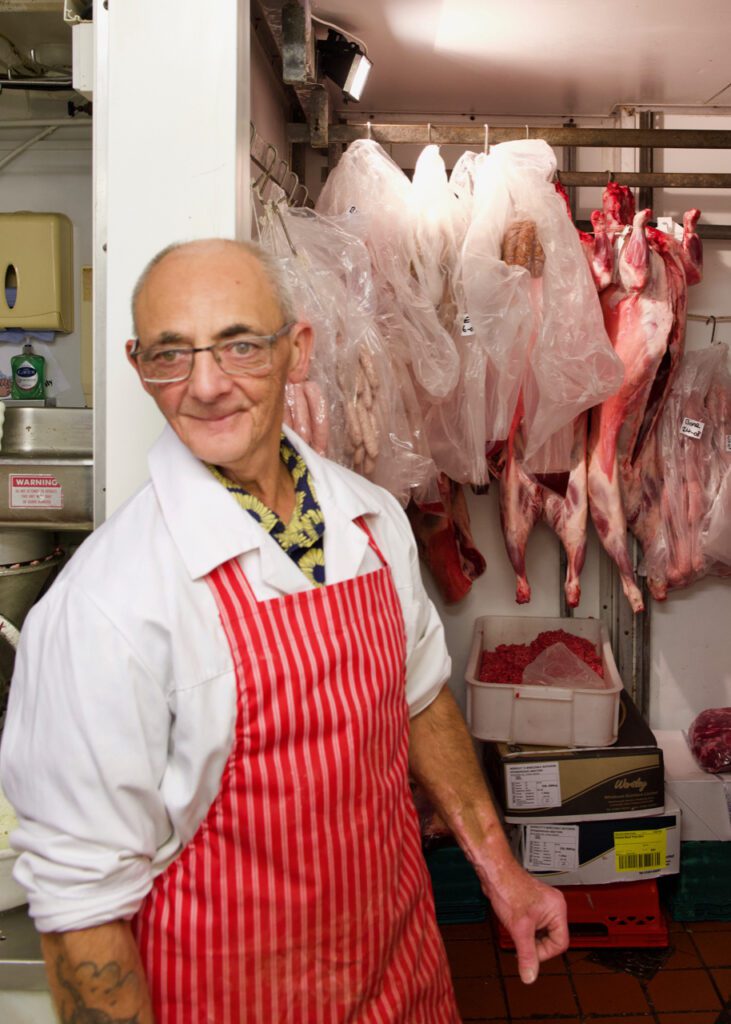
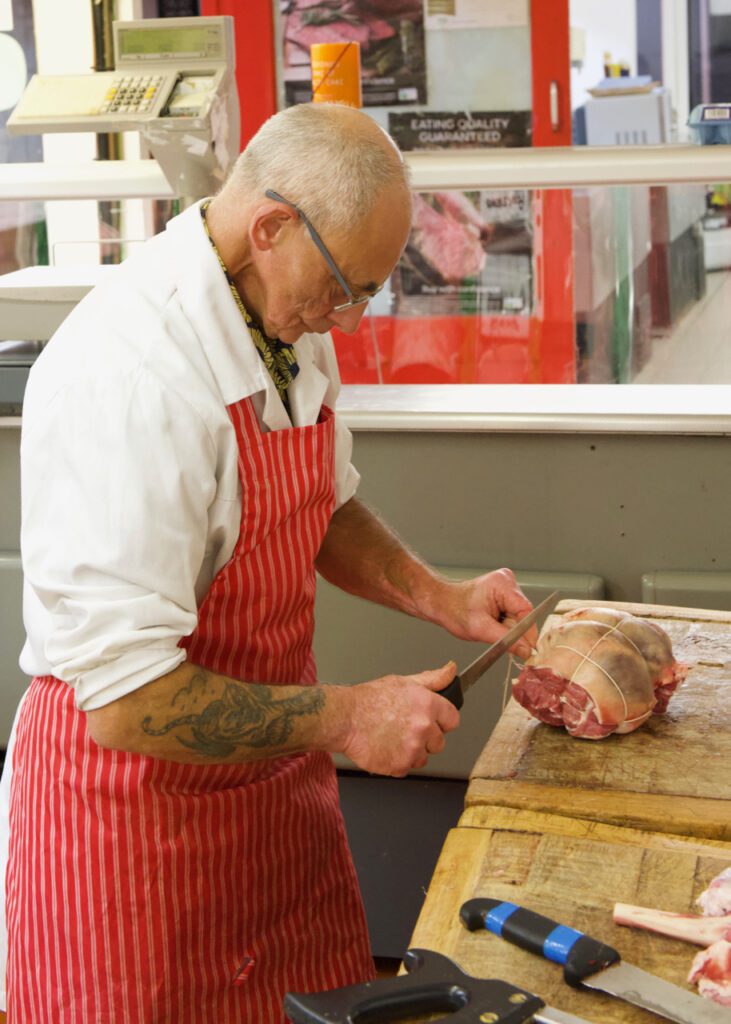
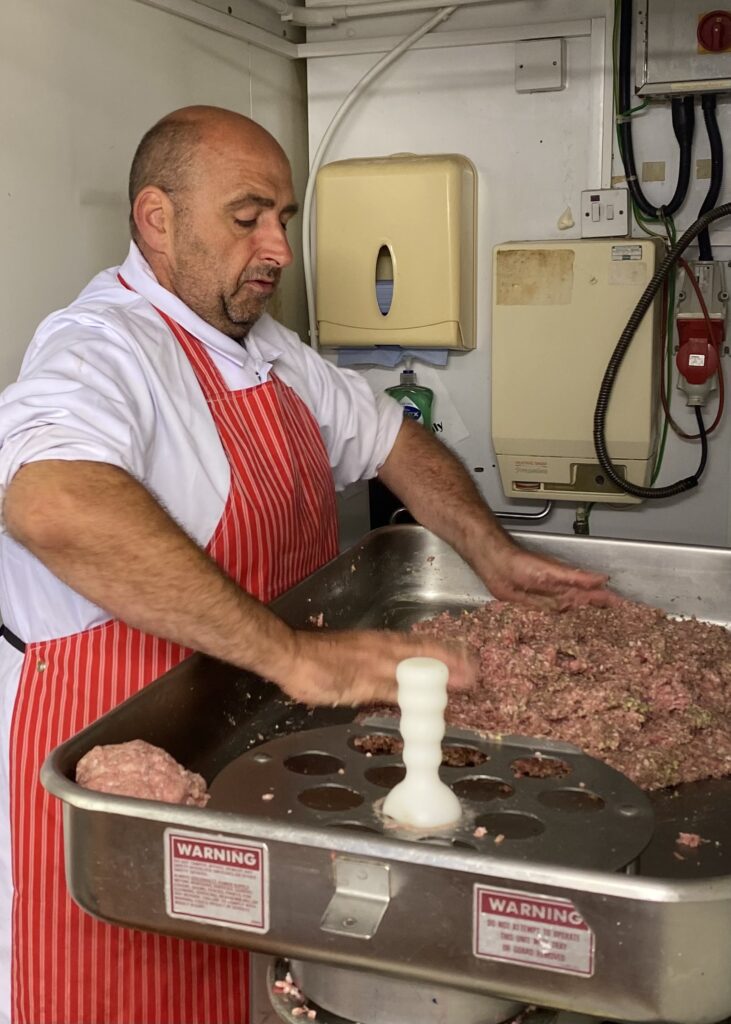
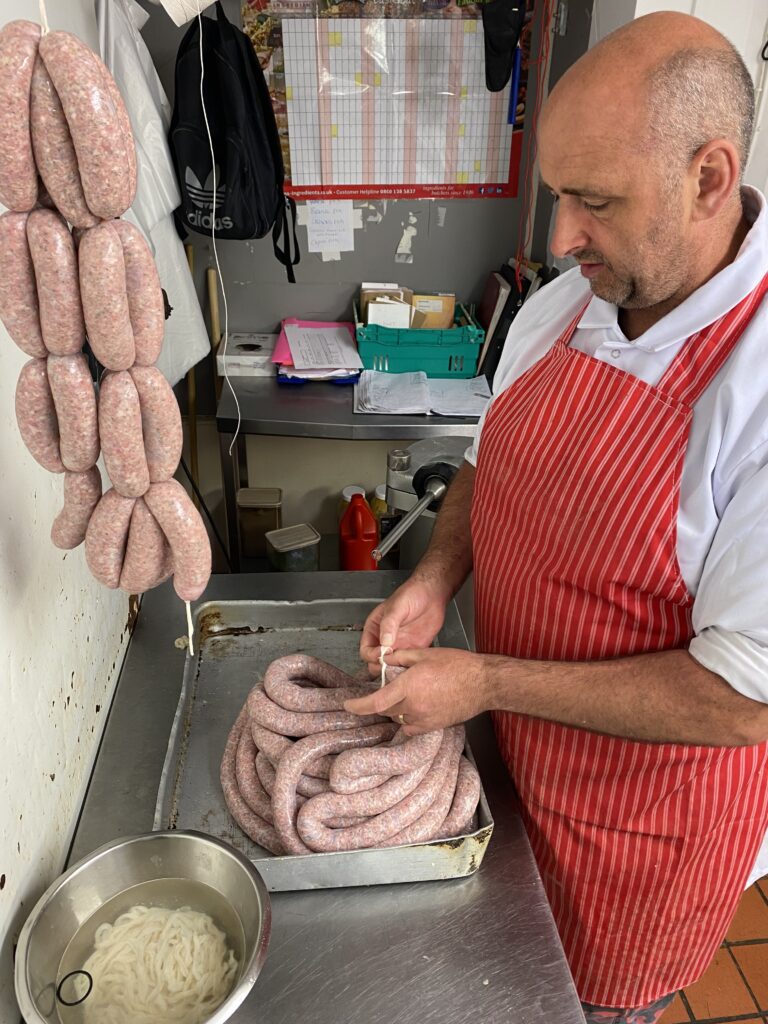
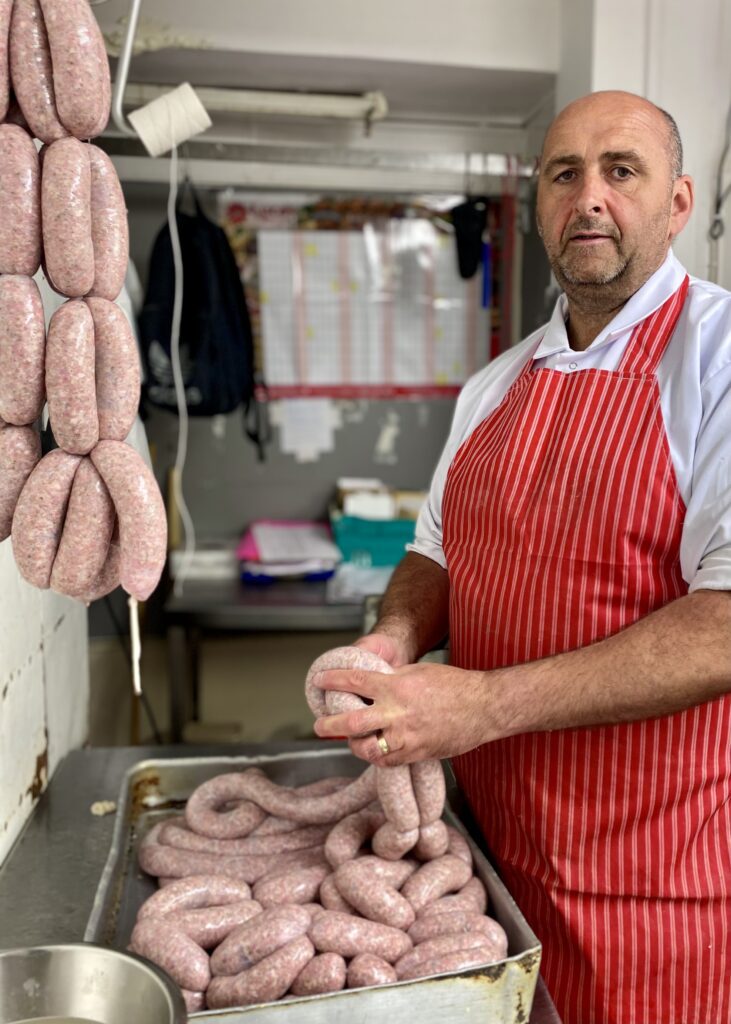

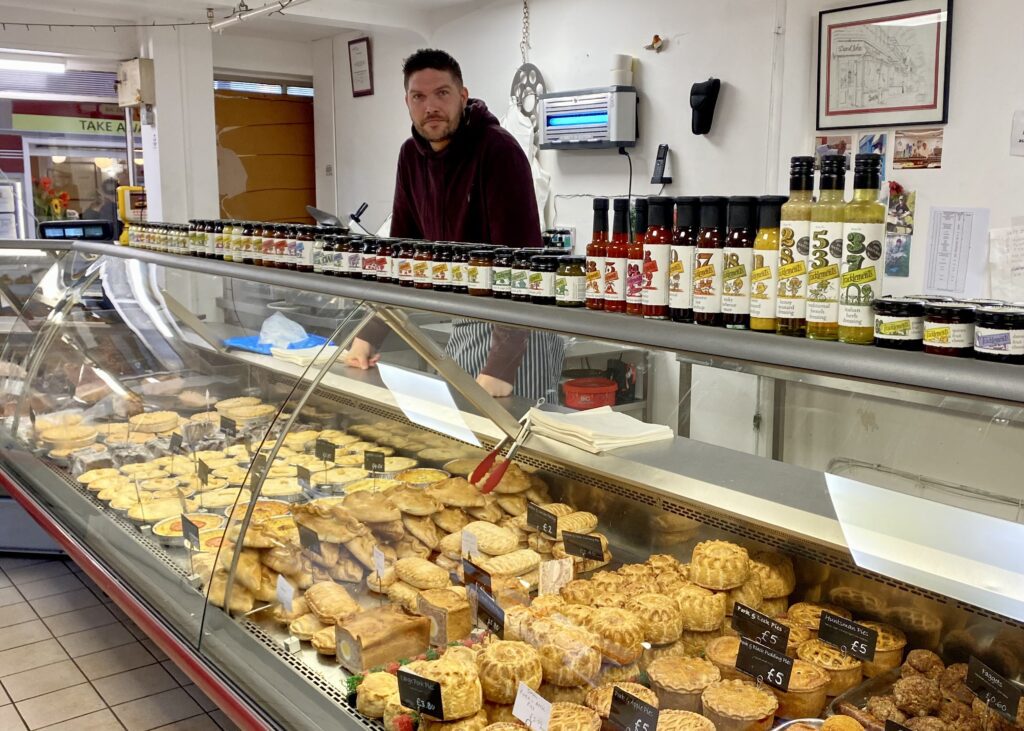
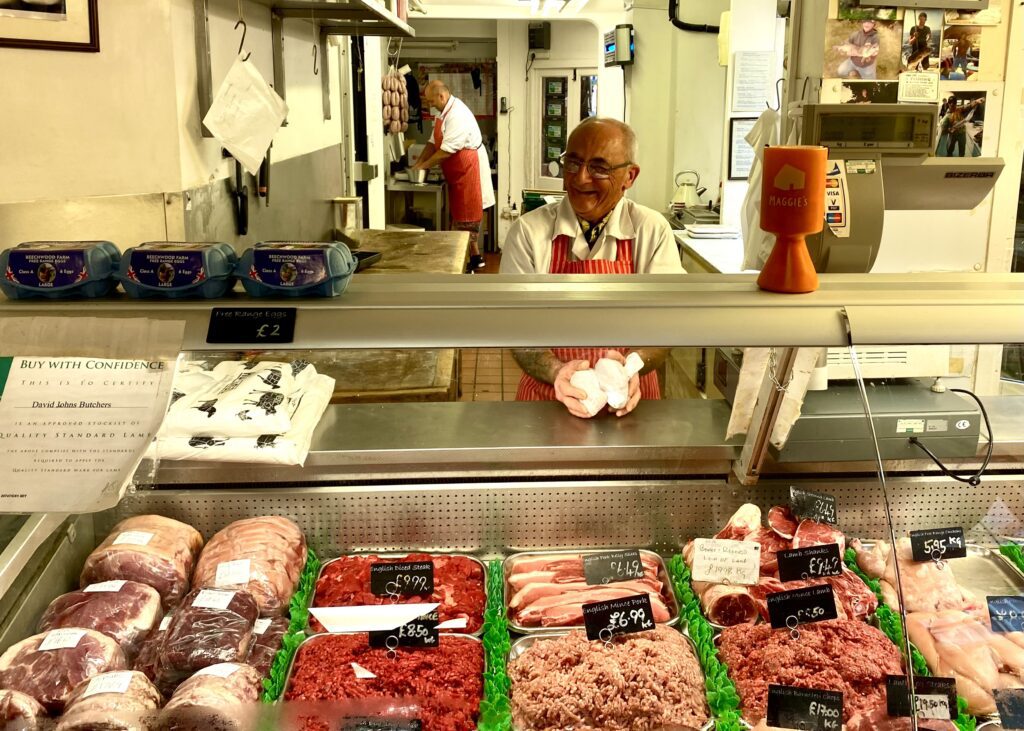
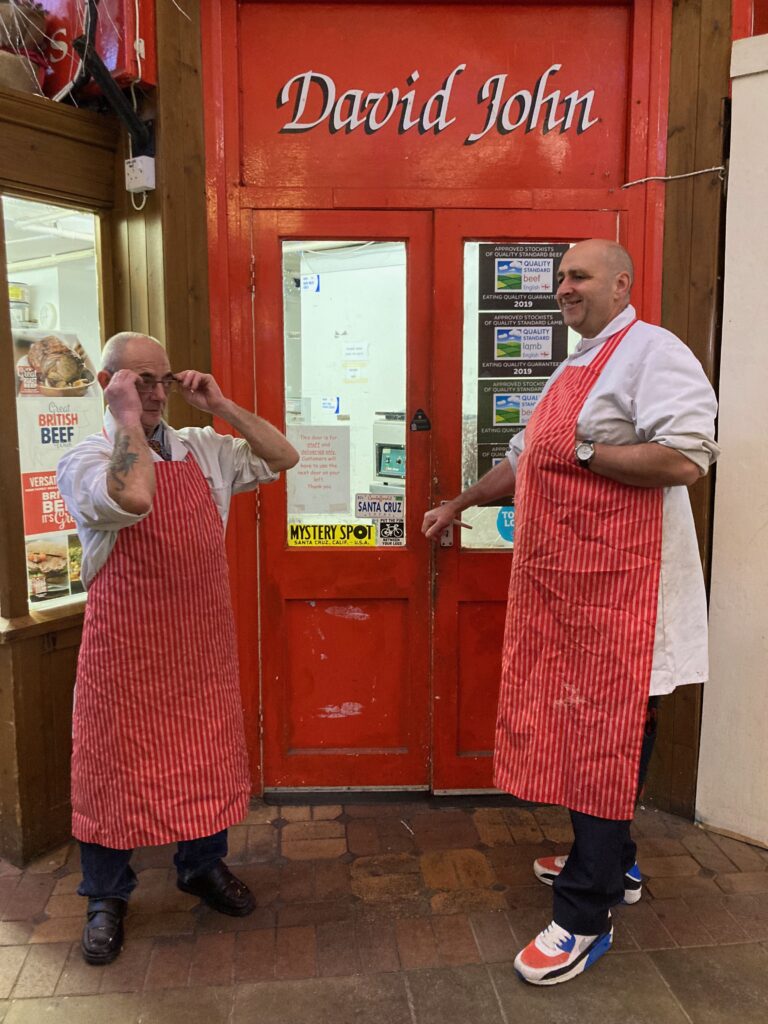
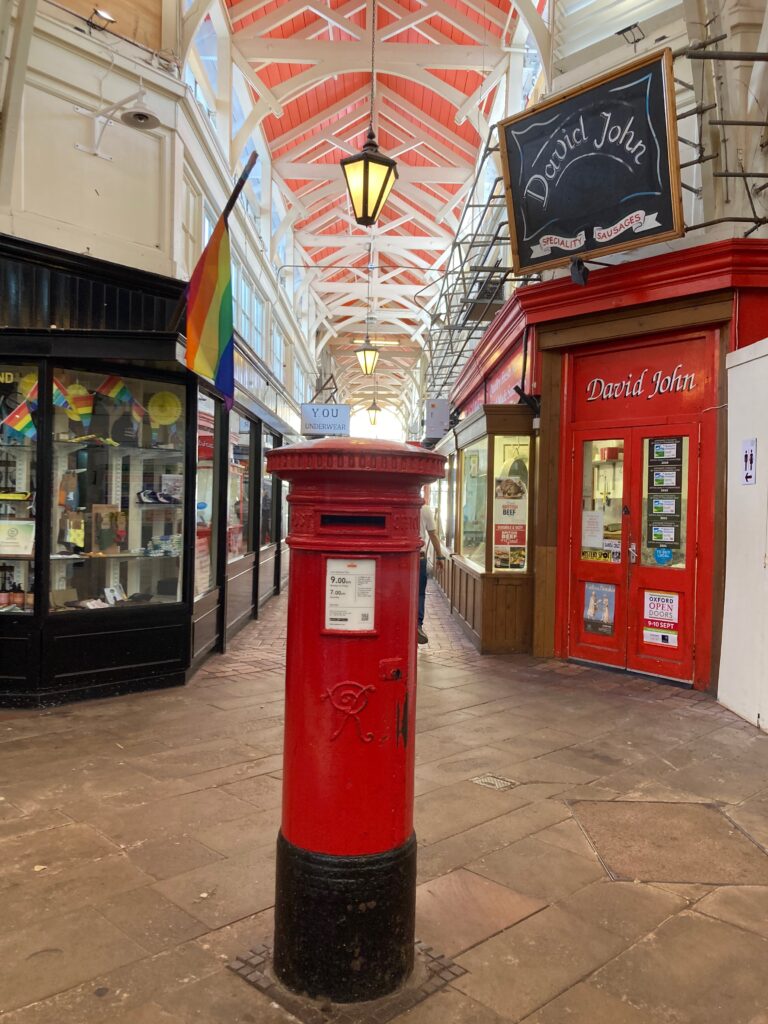
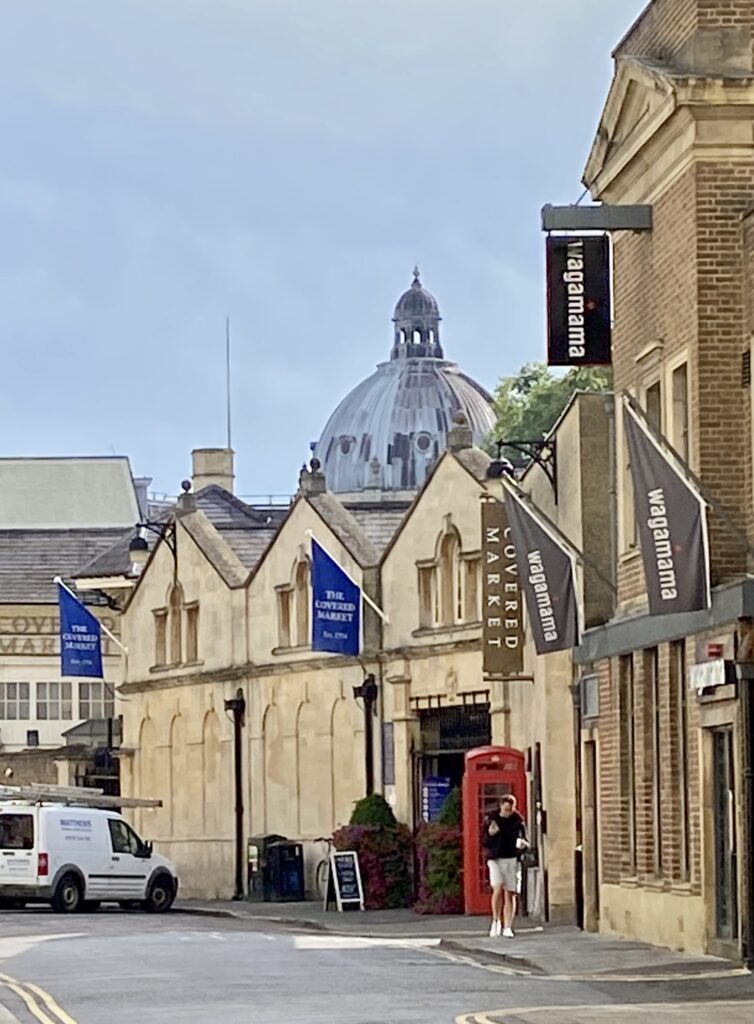
The Market Street entrance on the North side of the market, with the Radcliffe Camera behind.
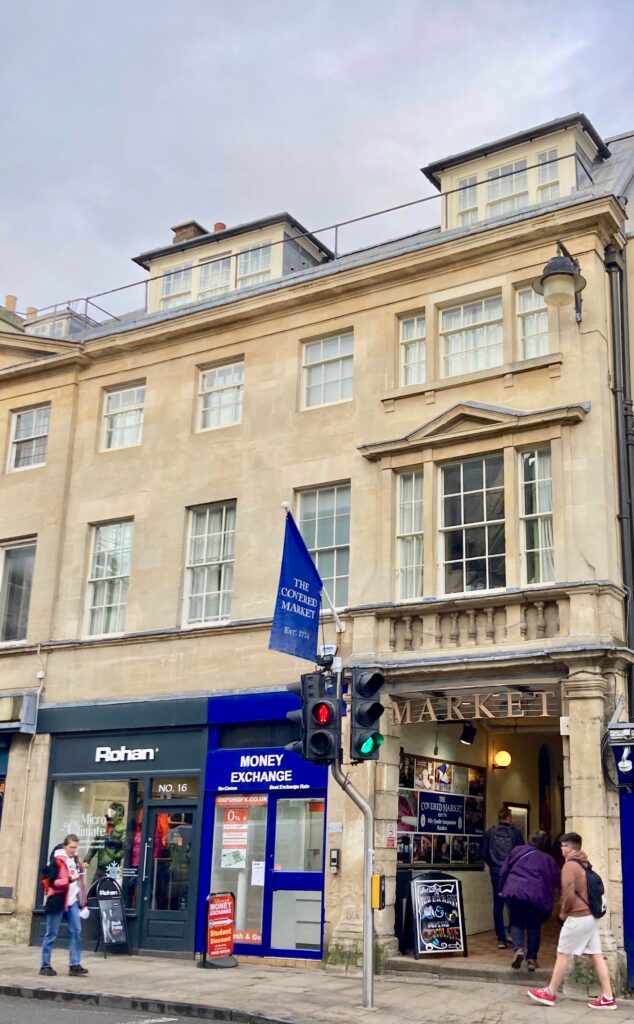
One of the four avenue High Street entrances from the south side of the market
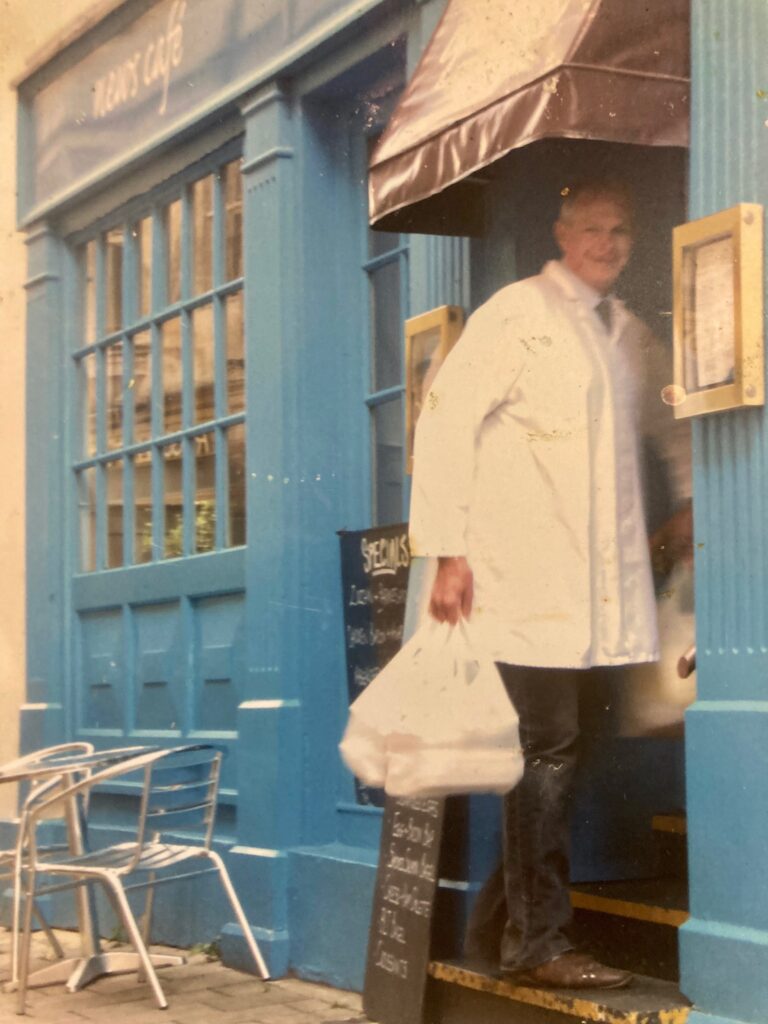
David John himself back in the day, out on delivery to Ship Street.
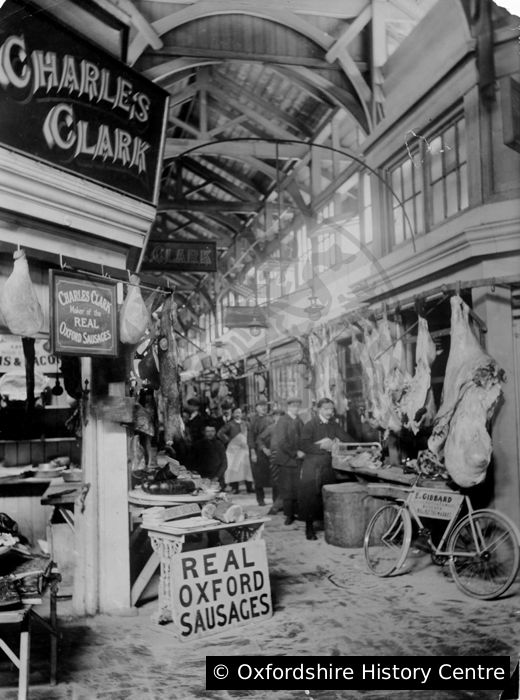
www.pictureoxon.org.uk
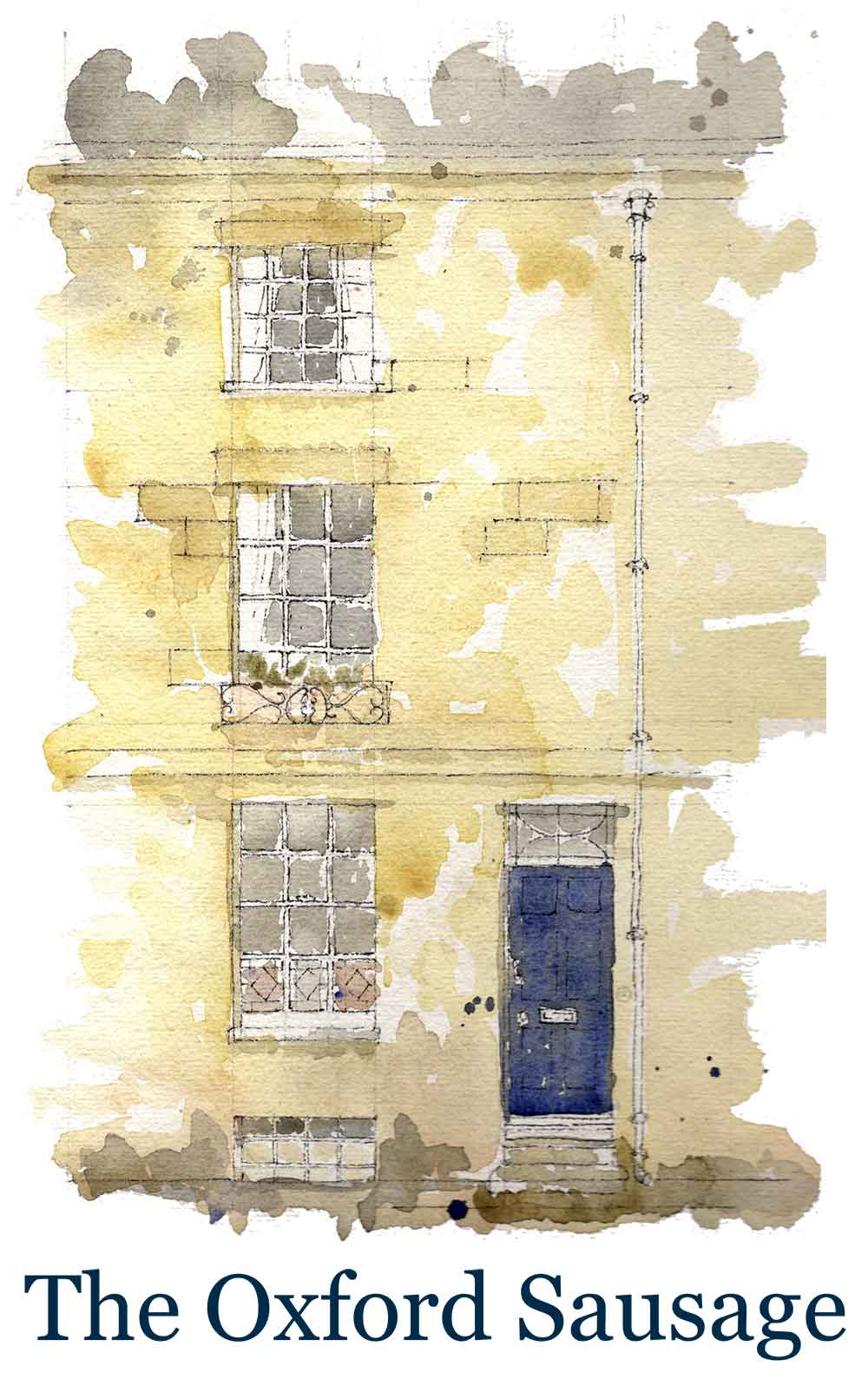
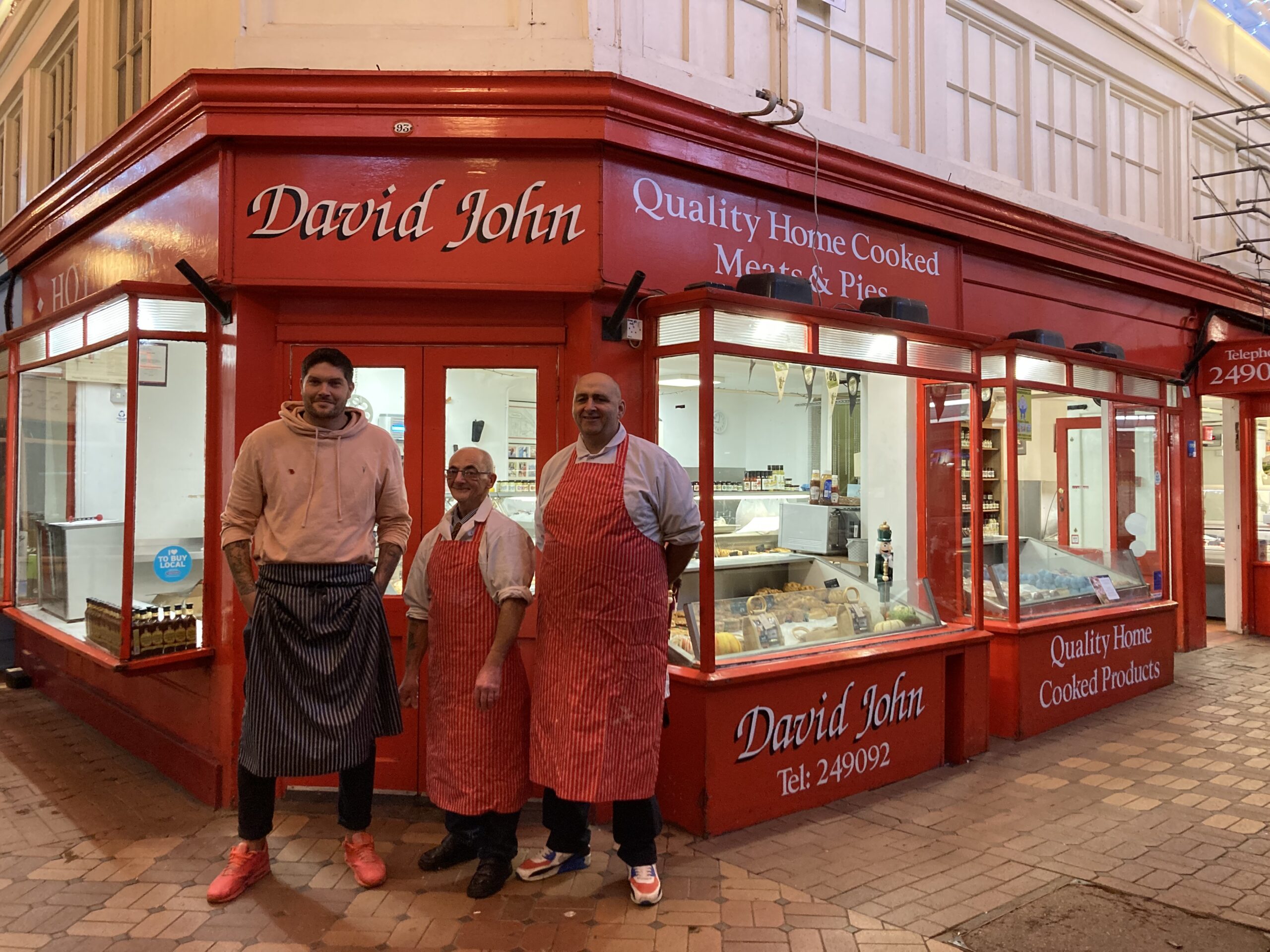
7 Comments
Join the discussion and tell us your opinion.
Just curious, but was that sausage-making first leaseholder of the property where your townhouse stands affiliated with the Covered Market?
And apropos of almost nothing, whenever did “sausage” come to be used to refer to school-age children, not just to inoffensive, easy-goings persons (OED)?
Thanks for the wonderful writing.
Almost certainly as until relatively recently it was only legal to sell meat there although many took no notice of the rules. I don’t know about that use of the word ‘sausage’ but thank you for pointing it out. Most interesting.
Such an interesting piece. I’ll be heading in for my Oxford sausages next time i’m in town!
Love a good sausage. perhaps you can get him to make some boerewors (pronounced bou-ra vors),
delicious beef sausages, presented in a spiral, and always cooked on the braai…great writing as ever.
Well done David John you made it to the end !! Did my share of making that famous Oxford sausage good luck in your retirement well earned all them years in the market a very unforgiving place to work always cold in winter and stuffy in the summer don’t miss it one bit 😂😂
Again thanks Arabella. I went to a talk last week called “The Butcher, the Tailor, the Picture Frame Maker” by Gareth Winrow, about the history of Middle Way and its people. Some of those Covered Market Butchers lived in the villas that populated Summertown. Along with spies, murderers and art dealers. Will lend you the book.
Three generations of my family used Hedges Butcher’s shop in the Covered Market. I now live in Windermere and we have a wonderful butcher’s shop called Huddlestone’s. His display is just like the counter in one of the pics above. He has won national awards for his pies and his Cumberland sausages are fantastic. Long live the butcher’s shop!